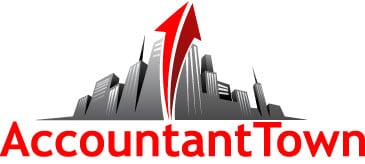Cost Accounting – Special Order System – Process Method
SPECIAL ORDER SYSTEM BASED ON THE
PROCESS OR MACHINE METHOD
The system outlined in this chapter provides for finding costs under the machine or process method, and differs from the system described in the preceding chapter more particularly in the method used for the distribution of indirect or overhead charges by operating departments or manufacturing centers. It is applicable where the production order represents the customer’s order, although it may be used to advantage where the production order represents a definite production by classification of product from which customers’ orders are filled. As the conditions in every plant—even those in the same line of business—are different in some respects, the forms submitted here are only for illustrative purposes, and to suggest the general nature of the designs to be used. It will be noted that certain forms are used of exactly the same kind as in the previous system.
Purchase Requisition (Form i)
The explanation in Chapter XIV covers the salient points in connection with this form. As the present system is adapted to plants of larger size than the system described in Chapter XIV, the purchase requisition would usually be made out by the stock clerk, all material purchases going into the storeroom.
Purchase Order (Form 2)
In illustrating this design, which is the same as the purchase order of Chapter XIV, particular attention is called to the caption “Charge To,” under which the entries should indicate whether the charge is to be made against the production order or the storeroom.
Report of Material Received (Form 3)
The explanation of this form will be found in Chapter XIV.*
Accounts Payable Voucher (Form 7)
The accounts payable voucher provides for recording and analyzing the expenditures, and arranging them in such a manner as to facilitate entry on the register of accounts payable. The expenditures are classified into two main divisions:
(1) Those affecting factory records
(2) Those affecting general ledger accounts
The entries affecting factory records consist of material, labor and indirect expenses; while the general ledger entries consist of administrative expenses, selling expenses, and all charges to capital accounts, such as real estate, plant, equipment, etc.
When the accounts payable voucher calls for materials or supplies purchased, the purchase requisition, purchase order and material received sheet should be attached; and if it shows the expenditure for labor as well, the pay-roll analysis should also be attached.
Register of Accounts Payable (Form 9)
The accounts payable vouchers are entered in the register of accounts payable according to date and voucher number. In addition to showing name of creditor and amount payable, the form provides space for entering payment of the voucher and for indicating the charges to the operating and property accounts.
The entries for the accounts in the general ledger are as follows:
The total of the “Accounts Payable” column is credited to the Accounts Payable account. The totals of the “Factory,” “Selling Expenses,” “Administrative Expenses,” “Machinery and Tools,” “Real Estate and Buildings,” and “Furniture and Fixtures” columns are debited to their respective accounts. The details in the “Miscellaneous Accounts” column are posted individually to the debit of the proper accounts.
Stock Record—Raw Material (Form 10)
In this system, all raw material stock is supposed to be ordered by the stock clerk, who fills in the quantity under the proper caption at the time he makes out the purchase requisition. The information as to the quantities received and delivered is obtained from the report of material received and report of material delivered, the costing being obtained from the latter.
Production Order and Cost Sheet (Form 16)
It will be noted that in both the special order systems, the production order and cost compilation are combined. The two purposes—that is, the authorization for the manufacture of goods and the compilation of the costs—may as well be separated, and this has been done in the product systems described elsewhere.* In the present system the first copy of Form 16 is used as a production order only, while the duplicate is used as a cost sheet. The purpose of using different designs in the different systems, as already explained, is to illustrate the different methods of gathering the cost data.
If sub-production orders are issued to the various departments, it will be necessary to use the original only, not the duplicate. The use of the duplicate copy is explained in its proper order in this system.t
Material Requisition (Form 19)
The general explanation of this form is given in Chapter XIV, but where the requisition is to be used for the supplies chargeable to a machine or process, the machine or process, according to the department, should be indicated under the caption “Charged” in place of “Order Number.”
Report of Material Delivered (Form 25)
The “Report of Material Delivered” is used in this system to summarize the material requisitions according to department and order number. In case of supplies chargeable to a machine or process, the order number should be omitted, and the machine or process inserted. The costs of material delivered are entered on this form, and not on the requisition. The raw stock records are also credited from the “Report of Material Delivered.” If the material is to be used for maintenance, an entry is made on the process card record, and if for repairs and supplies, on the “Power Cost and Distribution Record.” The material cost is entered on the duplicate copy of the “Production Order and Cost Record,” according to order number.
Access the contact form and send us your feedback, questions, etc. We are always welcome to help someone out. You can also contact us if you wish to submit your writing, cartoons, jokes, etc. and we will consider posting them to share with the world! The Facebook and LinkedIn groups are also good areas to find people interested in accounting like yourself, don’t hesitate to join as everyone of all levels are welcome to become part of the community.

